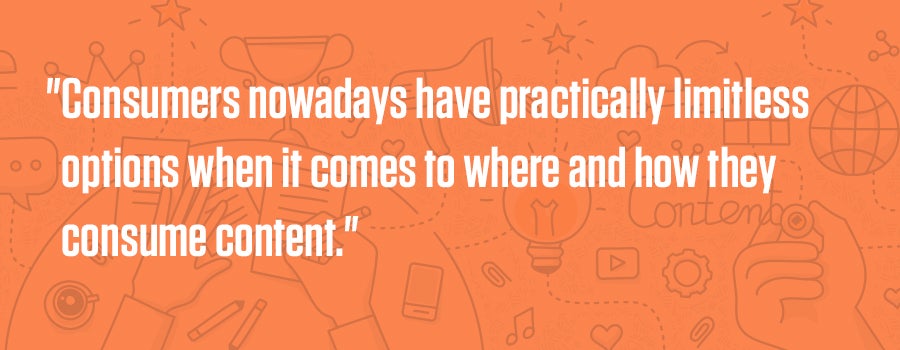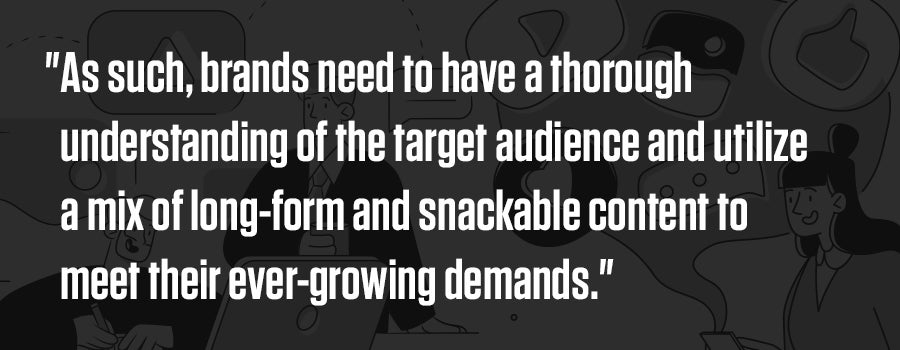The online marketspace is incredibly vast. Consumers nowadays have practically limitless options when it comes to where and how they consume content. Because of this, marketers must understand what it is their target audience is looking for as well as the best way to deliver it. One key aspect of this is content length. Below, we’ll briefly explore two types of content — snackable and long-form — along with the potential advantages of each.
First, what is snackable content? Going even shorter than short-form, this type of content is typically only around 200 words. It is meant for fast, efficient consumption. It is directed mainly at users on mobile devices who do not have the time or attention span to expend on lengthier content. Snackable content has become popular quickly, as it provides easy-to-digest and shareable pieces of information that many on social media and other such apps or platforms crave.

Going this route can be advantageous. When snackable content is well-constructed and optimized for mobile, it can generate higher engagement rates, as the content grabs attention and is consistently shared. To fully capitalize on this, the content ought to be adaptable across platforms. The versatility of content that can be reworked to suit different formats — such as videos, infographics, etc. — as well as various platforms enables creators to maximize its value, impact and ability to reach new viewers. This helps spread the content numerous ways, such as Stories, TikTok videos and Instagram Reels.
Long-form content also has merit. Seen as more authoritative, these pieces are sought after by those looking to be informed on a deeper level. As these users are typically more invested, they are more likely to maintain interest throughout the content, even though it exceeds 1,000 words. Of course, users can’t be expected to read every word. Long-form content can also be an advantageous route, as it performs better in search engines and other key metrics. In fact, content with more than 3,000 words boasts 21% more traffic and 24% more shares than articles with 901 to 1,200 words.

Long-form is also beneficial in that it’s great for building trust. As consumers continually navigate our oversaturated digital landscape, they get better at seeing content for what it is and realizing its intent. Because long-form content generally requires more planning and research, it is seen as a more trustworthy source. When a brand goes the extra mile and establishes trust as a reliable expert through strategic content, it can help increase conversion rates and other growth-related metrics. Due to length, long-form content is particularly suited to white papers, webinars and blogs as well as YouTube where longer videos see greater success.
In the end, both forms of content can be rewarding when positioned in the appropriate situation or setting. As such, brands need to have a thorough understanding of the target audience and utilize a mix of long-form and snackable content to meet their ever-growing demands.
